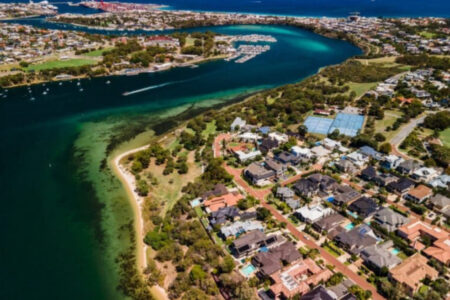The Smart Freeway Influence on Perth WA
Let’s talk Smart Freeways and how they are benefiting our roads here in Perth WA….
First Developed by Highways England, The Smart Freeway employs active traffic management (ATM) techniques to increase capacity using Motorway Incident Detection and Automatic Signalling (MIDAS).
Intelligent Transport Systems (ITS) such as road sensors, detection radars and CCTV cameras monitor traffic conditions adjusting them in real time. For instance, changing speed limits when needed, using ramp signals to make merging safer during busy periods, opening and closing lanes if necessary, whilst gathering and feeding information to a state-of-the-art Road Network Operations Centre (RNOC).
The RNOC is monitored 24/7 and provides data which is collected from the in-road technologies to skilled operators. Technology Companies such as RNOC, TomTom and Google use this traffic flow data via halogens reporting systems.
There are three types of Smart Freeways:
- Controlled motorway –This involves three or more lanes with variable speed limits but retains a hard shoulder.
- Dynamic hard shoulder – This is where the hard shoulder is used as a fourth lane when required.
- All Lane Running (ARL) – This is where the hard shoulder is permanently used as a fourth lane, only being closed to traffic in the event of an incident. Instead of the hard shoulder, motorists instead need to use specially designed Emergency Refuge Areas to remove themselves from the road in the event of difficulty.
Main Roads delivered Western Australia’s first smart freeway in 2020, it is located on the northern part of the Kwinana Freeway, running northbound from Roe Highway to the Narrows bridge. Since installation there has been a 13 % traffic increase across the Narrows Bridge during morning peak periods. It has added an extra element to the construction industry by building the community’s trust.
The Kwinana Smart freeway consists of six emergency stopping bays, one every 500 to 700 meters. These bays are fitted with traffic sensors and all-weather thermal imaging cameras that are monitored by our RNOC operators. This project is unique because it includes civil construction (the conversion of the emergency lane into a traffic lane) and installation of ITS technologies that manage traffic flow.
State contractors, consultants, and technicians from overseas were destined to work on the Kwinana project. However, with the impact of COVID-19 in 2020 local technicians and companies had to step up, educate themselves and work remotely with the experts that could no longer get to WA. This in return created hundreds of local jobs in Perth, WA and will continue to create more jobs for locals, in a time when steady employment is more important than ever.
The Smart Freeway contract in Perth WA is jointly funded by the Australian ($70 million) and Western Australian ($70 million) Governments, while the additional lane from Hodges Drive to Hepburn Avenue and shared path upgrades are jointly funded by the Federal and State Governments and estimated to cost $76 million.
Now, Main Roads has ambitious plans to transform the Mitchell Freeway southbound with the same technology by 2023.
Mitchell Freeway services 180,000 motorists daily. The 36km stretch will include similar smart technology features to its Kwinana Freeway counterpart, with works already beginning on the Hester Avenue to Warwick Road sector.
The Smart Freeway Mitchell Southbound project will feature 16 entry ramps with Coordinated Ramp Signals (CRS) along its length and is expected to provide similar opportunities to the State’s workforce expecting to support up to 500 jobs during construction.
Introducing Smart Freeways to Perth WA provides the following benefits:
- Reduction of traffic accidents with more sufficient emergency response times.
- Dedicated Incident Response vehicles on standby 24/7.
- Drivers to save up to 10 minutes when travelling on Kwinana Freeway northbound from Roe Highway to the Narrows Bridge.
- Drivers in the northbound lanes between Russell Road and the Narrows Bridge to save up to 20 minutes travel time.
- Traffic entering the freeway from Canning Highway go straight into the new fourth lane, which goes all the way to the Narrows Bridge
- Vehicles entering from on-ramps will achieve higher merging speeds before joining freeway traffic.
- Journey reliability will be dramatically improved with congestion relief to more than 180,000 motorists per day.
- Current infrastructure will be used more efficiently to cater for future demand.
- Construction costs and time will be minimized rather than committing to road widening construction programs
- Variable speed limits will Improve traffic flow and safety.
- Traffic will be managed in real-time.
- Less pressure will be placed on local road traffic.
The UK M42 2006 smart freeway scheme was initially run as an experiment however their Highways Agency report in the first six months of activity provided the below statistics:
- Reduction in variability of journey times of up to 27%
- Fall in the number of accidents from over 5 per month to 1.5 per month on average.
- 10% fall in pollution
- 4% fall in fuel consumption
- Indicated compliance rate of 98% to the indicated speed limits when using the hard shoulder
Benefits of the Smart Freeway become more apparent as it settles into the Perth WA lifestyle. The project has already been hailed as a success, creating roads for Western Australians that get them home safely and allow more quality time at home with their family and friends.
As Perth continues to develop and grow as does our innovative technologies with more efficient solutions to our way of living. The question we have for our readers is….what do you think is next for smart technologies?
Sources; Link 1,Link 2, Link 3, Link 4, Link 5, Link 6 ,Link 7





